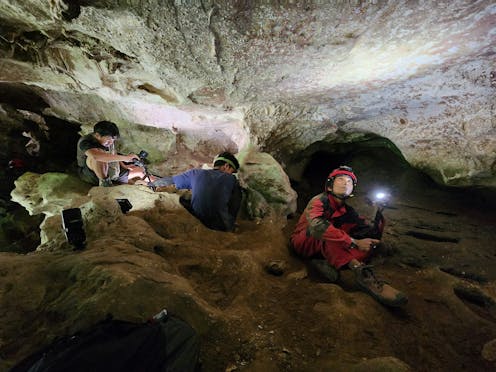Figurative rock art – art that presents lifelike representations of subjects – provides visual insights into ancient cultures, beliefs and societal practices, offering a direct window into human cultural evolution. Being able to date figurative rock art accurately is crucial. It helps establish timelines of human artistic expression, aiding in understanding the development of symbolic thinking and cultural complexity across different periods and regions.
In an article published in the journal Nature today, we present a novel approach to date cave paintings. Using this new dating innovation, we have found the world’s oldest figurative cave art. Dated to at least 51,200 years ago, the art depicts an interaction between humans and a pig.

It was found in a cave in Sulawesi, an island of Indonesia directly north-east of Bali and east of Borneo. It’s a crucial piece of our history as humans, suggesting figurative art and storytelling have long been intertwined. In some limestone caves where people made rock art, dripping or flowing water occasionally led to the formation of mineral deposits on top of the paint layer, which provide a way to date the art scientifically.
Each drop of water leaves a tiny amount of carbonate particles, leading to the formation of a whitish coating over the rock art. The same process also leads to the growth of speleothem (also known as stalagmite and stalactite) layers, with numerous layers of particles that encapsulate all sorts of elements, in.























